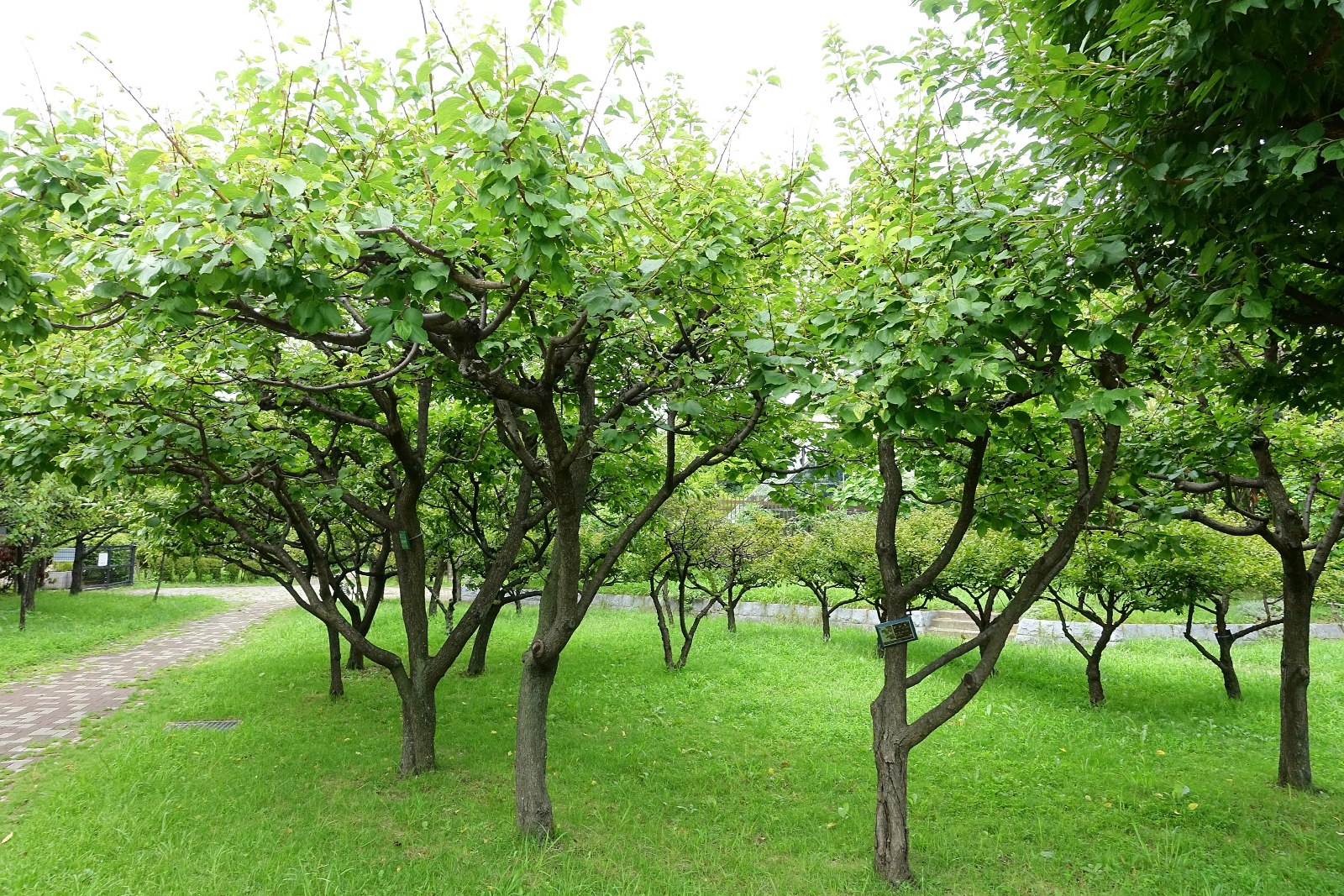Prunus armeniaca
Apricot
Species Tolerances
- Drought Tolerance: Medium
- Shade Tolerance: No
- Waterlogging Tolerance: Low
- Frost Tolerance (trees from warmer climates may be frost tolerant, but their flowers may not be): Yes
- RHS Hardiness: H4
- Optimum Conditions for Growth:
Suitable for an orchard style planting with a perimeter of larger trees around them for protection. Prefers good loamy soil, not too acid or alkaline. The blossom is very susceptible to frost damage so best grown on sheltered sites and not frost-pockets. - Susceptibility to Pest/Disease:
None of note at present in the UK

Prunus armeniaca, Urban Greening Botanical Gardens, Kiba Park, Japan/ Daderot/ https://creativecommons.org/publicdomain/zero/1.0/deed.en
Service to Pollinators
- Summary of Service to Pollinators:
Significant pollen and nectar will contribute to spring build up of bee colonies in a warm climate. Extra-floral nectaries producing more nectar, found either side of the leaf stalk where the petiole meets the leaf blade, of value to all pollinators. Honeydew also produced when aphids active. - Nectar Value to Pollinators: 3 (of 0-3)
- Honeydew Value to Pollinators: 1 (of 0-3)
- Pollen Value to Bees: 3 (of 0-3)
- Flowering Period: March-Apr
Risks
- Human Toxicity: Toxic
- Livestock Toxicity: Toxic
- Invasive Risk: No
- Suckering: No
Products
- Edible Fruit: Yes
- Edible Leaves: No
- Edible Sap: No
- Edible Seeds: No
- Honey, major source in UK: Yes
- For any medicinal potential, see 'Further Details' below.
- Timber: No
- Livestock Fodder: No
- Other Products:
Utility
- Nitrogen Fixation: No
- Organic Matter Accumulation: Yes
- Phytoremediation: Yes
- Deacidification: Insufficient Data
- Windbreak: No
- Soil Erosion Control: Yes
- Shade or Shelter: Yes
- Plant Support: Insufficient Data
- Integrated Pest Management: Insufficient Data
- Wildlife Value: Yes
- Wildlife Value Summary:
Good for biodiversity referring to invertebrate diversity feeding on the tree, especially insects. Fruit are available to a large range of birds and mammals. - Graduated Nativeness Classification ⓘ: 9 (of 1-10)1. Historic Native
2. Historic Introduction
9. Neutral Introduction
Further Details
Medium size, adaptable to warmer climate. Susceptible to frost at around flowering time which would knock capacity to bear fruit. Grow on their own or amongst other trees if there can be sufficient space around them, but also with the shelter from other trees or buildings.